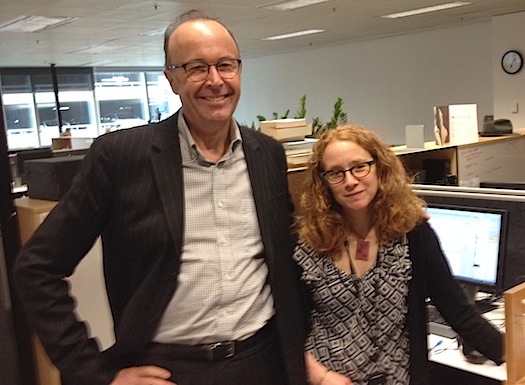Julie Shapiro has recently joined ABC RN to head the Creative Audio Unit. She talks to radioinfo about her thoughts on audio arts, and why listening is more important than ever.
RN’s approach with this new unit is to focus on radio as an art form, allowing works to explore the audio medium from an artistic viewpoint.
“I’d go further than saying sound/listening is still important in our digital age… I’d say it’s actually more important than ever,” says Shapiro.
“Listening – to stories, to interviews, to music, to the natural sounds around – offers a uniquely intimate sense of the world.
“Focusing on what your ears deliver, while the hyper-visual world swirls and accelerates around us, can help you navigate through the flood of sensory stimulation we encounter daily. Listening is personal and powerful, grounding and revealing. Radio, we like to say, is the most visual medium, as it engages your imagination in deep, and meaningful (and often hugely entertaining) ways.”
Shapiro describes herself as “a career listener, thinker, innovator, encourager, and champion of story” and has an international pedigree in the audio feature field.
In 2000 Shapiro co-founded the internationally acclaimed Third Coast International Audio Festival in America, where as artistic director she shaped its creative trajectory and promoted innovative audio and an international listening culture. She has taught radio to university students, presented listening events at conferences all over the globe, consulted for radio organizations, and produced stories for the public radio airwaves in the US and beyond.
“We’re excited by a palpable renewed interest worldwide in audio, as both an ace storytelling vehicle AND a legitimate medium for art, in the recognition of audio’s ability to remain nimble and ‘keep up’ in our technology dependent/obsessed world, and in the growing desire by audiences everywhere to try their hand at collecting, editing, and sharing audio from their own lives within their private and public communities.
“It’s a great time to be seeking collaborations both with radio producers all around the world, as well as reaching out to writers, artists, performers across other fields, to cultivate partnerships and collaborations. It’s a great time to have launched two shows aiming to commission and showcase a wide range of work that demonstrates the potential for innovation across audio genres!”
The two shows in the new Creative Audio Unit are Soundproof and Radiotonic. What is Shapiro’s philosophy for selecting and commissioning content for those shows?
“As far as the work we’re seeking for the shows, Radiotonic leans more into narrative work, while Soundproof pushes the envelope with the listening experience. We refer to Radiotonic as bringing listeners “storytelling with a twist,” and urge Soundproof audiences to “trust their ears.”
“Fiction, non-fiction, creative monologues and radio dramas will find their way onto Radiotonic. Soundproof engages with composed features, soundscapes, experimentation and performance. On paper the shows sound different and perhaps they occupy different spaces on the audio spectrum, but what binds them is a shared drive to encourage audiences to take a closer listen. To pull up a chair, and open their ears. To consider their radios (or iPods) as sound art galleries. And to engage with what they hear – at a personal level, and (at the risk of sounding overly-ambitious) by hearing the world they live in differently.”
In the first few Soundproof and Radiotonic programs, renowned audio producers presented their favourite programs in a series called Radio Yaks. Shapiro even shared some of her own favourite audio pieces in one of the Radio Yaks. Since then, Soundproof has widened out its features to a range of audio pieces from the exploration of sacred sonic spaces to the audio adaptation of a stage play.
The new programs sit in two one hour weekend slots and content is available online and through podcasts.
Commissioning is not just through traditional radio makers, the new unit seeks to find people who are making creative audio online and bring their content to the radio medium.
After the staffing shake up a couple of years ago, there are just three and a half positions in Shapiro’s creative unit, but the unit now has a bigger budget for commissioning external productions. This sort of efficiency has recently been recommended in the Lewis Review, but RN implemented the approach well before that review.
Soundproof airs at 8pm Sunday nights and Radiotonic is heard on Sundays at 3pm.

